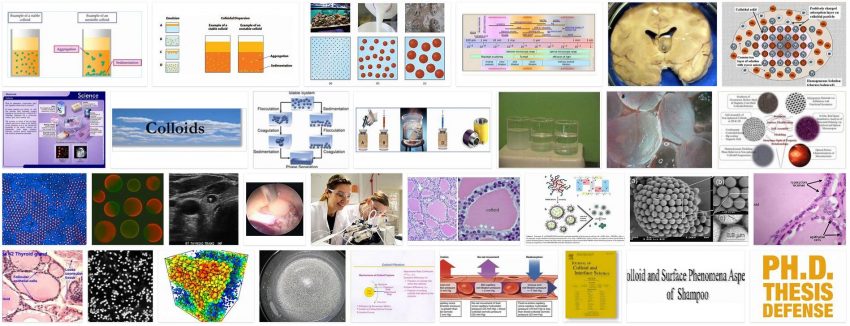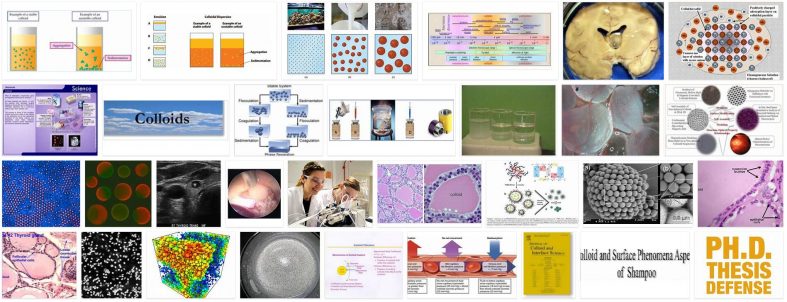Colloid is the mixtures of substances that are between the solutions and the suspensions and whose particles have a size between 10 and 100 nanometers.
The word colloid derives from the Greek kolas which means “to stick.”
Therefore, when a colloid is referred to, it is because we are talking about a set of particles that are characterized by the ease they have to join and how difficult it is to separate them.
Colloids also receive other names such as colloidal solution, colloidal dispersion or colloidal substance.
Colloid Characteristics
Colides are characterized by being formed, in general, of microscopic particles difficult to see with the naked eye, however, sometimes they can also be made up of macroscopic particles that are easier to observe.
Colloids are mainly characterized by being the result of a mixture that is carried out in two phases: the dispersed phase and the dispersing or dispersing phase.
These resulting mixtures or substances, especially if they are fluid, do not separate easily, so sometimes specialists need to use coagulation methods.
Colloid Phases
Dispersed phase: this phase consists of those particles, of smaller or larger size, that are suspended in a liquid, which can act independently or in conjunction with other particles.
For example, they can be solid elements that can be observed through the microscope.
Dispersing or dispersing phase: it is a substance that contains colloidal particles distributed. Some examples of these colloids are homogeneous mixtures of which result: gel, aerosols, shaving foam, gum arabic, among others.
However, it can also be particles that can be seen without using specialized equipment. For example, suspended dust can be observed, through light, floating in the air.
Mist and fog are also a type of colloid that, in its dispersing phase, is in a soluble gas state, but in the dispersed phase it is in a liquid state.
Examples of colloids
Colloids can take different physical and chemical states depending on the phase they are in.
For example, emulsions are liquids composed of a set of colloid particles in their dispersing phase. However, in its dispersed phase it remains as a liquid substance and milk or mayonnaise can be obtained.
Another example, the liquid aerosols in the dispersant phase is a gaseous substance but, in its dispersed phase it becomes liquid and can be transformed into clouds or mist.
The foams in a dispersing phase have a liquid composition, but in the dispersed phase they are transformed into gas and substances such as foam soap or whipped cream are generated, etc.

